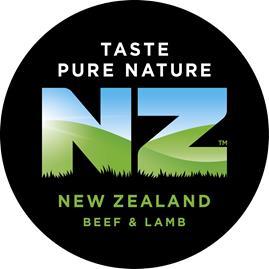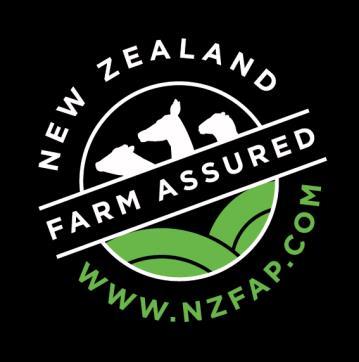
3 minute read
2. Origin, Traceability and Farm Inputs
The reason for recording the location of livestock and the products used to maintain animal health from birth through to the retail shelves is to assure customers that the livestock has been reared on properties conforming to the programme standards at all times. There must be systems in place to demonstrate minimum residency requirements are met and all shall be documented. Accurate record keeping is a critical element of profitable farming and farmers must maintain stock movements and other records to ensure traceability through the supply chain.
2.1 Origins and Traceability
Requirements
2.1.1 Livestock covered by the New Zealand Farm Assurance Programme scope must not have been imported into New Zealand.
2.1.2 Animal history –there must be a process in place to enable the identification of animalsincluding:
o Animals not born on the property must be identified or farmed in a manner to assure traceability and residency requirements
o
o Animals must be identified ifthe farm is a Ministry for Primary Industries (MPI) surveillance listed property or under MPI movement control for residues or any other purpose other thanTB
ASD forms must be retained for a minimum offive years.
2.1.3
2.1.4 Cattle and deer shall be individually identified and movements recorded in accordance with New Zealand NAIT regulations:
o The relevantmeat companyshall be notified ofTB suspect cattle being sent to the processing facility. Prior notification shall occur for livestock being consigned from herds with suspended or infected status.
o
o
o Suspect TB animals must have official orange/red tags in their ears
Animals under movement control shall have the official white tag in their ear
Farmers shall record all cattle and deer movements in NAIT.
Livestock movement records shall be kept up-to-date for transfers both on and offthe property and kept for at least five years. The following details shall be recorded:
o Date –enter the date the livestock arrived/departed from your property
o Origin/destination –enter the details of where the stock have come from or is going to
o
o
o Transport company –enter the name of the transport company used to transport the animals
Purchases/sales –enter in the stock tally and details, identification details including any special distinguishing tags/marks and other information which may include breed/sex
Comments –enter details of any comments you wish to make to assist identification and traceability.
2.1.5
2.1.6 Livestock purchased from a farm assured (ISO/IEC 17065 Certified) property that is accompanied by a correctly completed ASD and a declaration that the farmer is farm assured, will continue to be farm assured 20 days from time of arrival on that property.
o Livestock purchased from a non-farm assured property that are accompanied by a correctly completed ASD are eligible to be farm assured 60 days from time of arrival on property.
Consignments of wool transported off-farm should be accompanied by a completed wool bale specification sheet.
Recommendation
A copy of the ASDs for livestock purchases and sales should be attached to the rest of the records for those animals, i.e. purchase or sales advices.
2.2 Farm Inputs
Genetically modified animals are excluded from the programme.
Requirements
2.2.1 Ruminant livestock shall not be fed ruminant protein (e.g. blood and bone meal) in any form, composition or ad-mixture. (Biosecurity (Ruminant Protein) Regulations 1999). Note: ruminant protein means protein derived from ruminant tissue, including blood but excluding dairy product. Make sure you carefully read the label of any feedstuff that you suspect may contain any ruminant tissue. In order to assure anybodywho enquires about your feeds, retain the labels from any purchased feeds.
2.2.2 Any ruminant protein must be stored securely away from livestock.
2.2.3
2.2.4 Supplementary feed –any additive must be fully registered with the appropriate authority for use in New Zealand.
Sheep and deer shall not be treated with Hormonal Growth Promotants(HGP).
2.2.5 HGP cattle shall be identified with an appropriate mandated HGP eartag.




